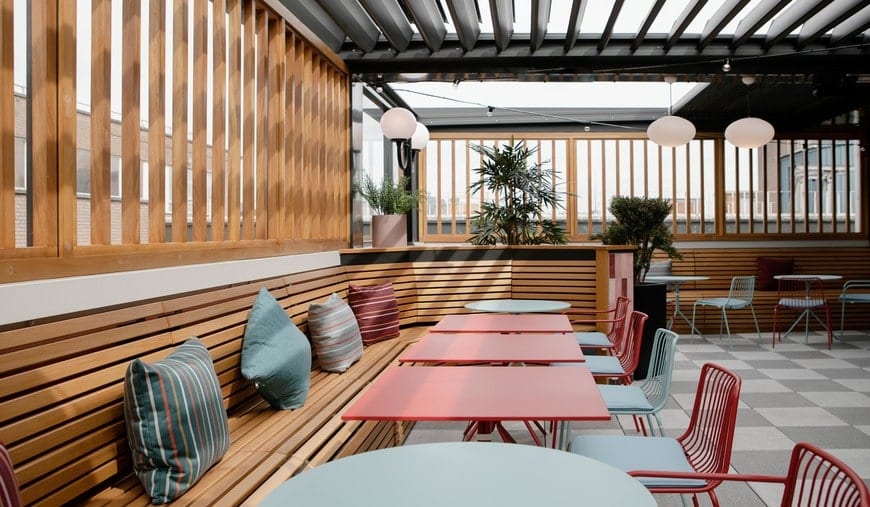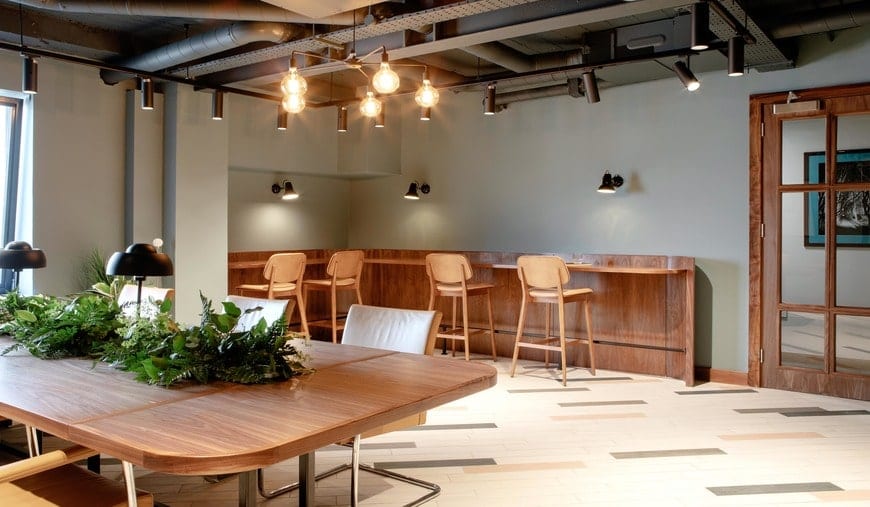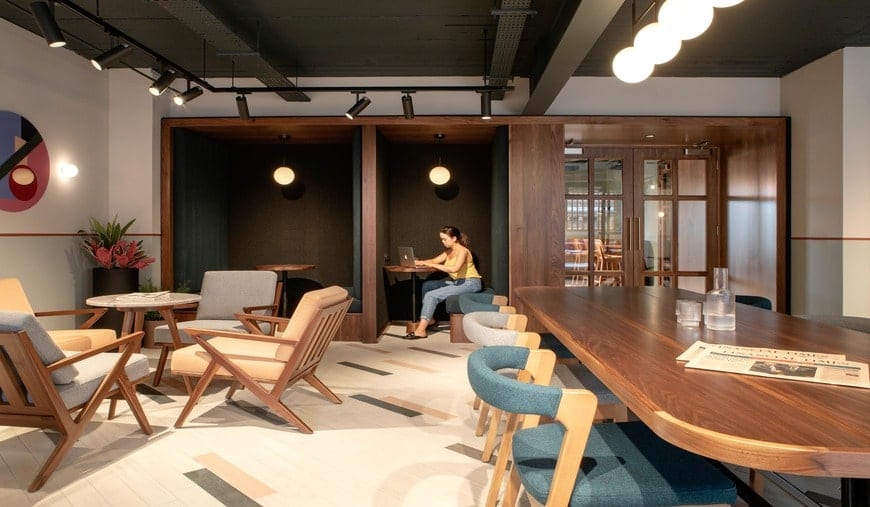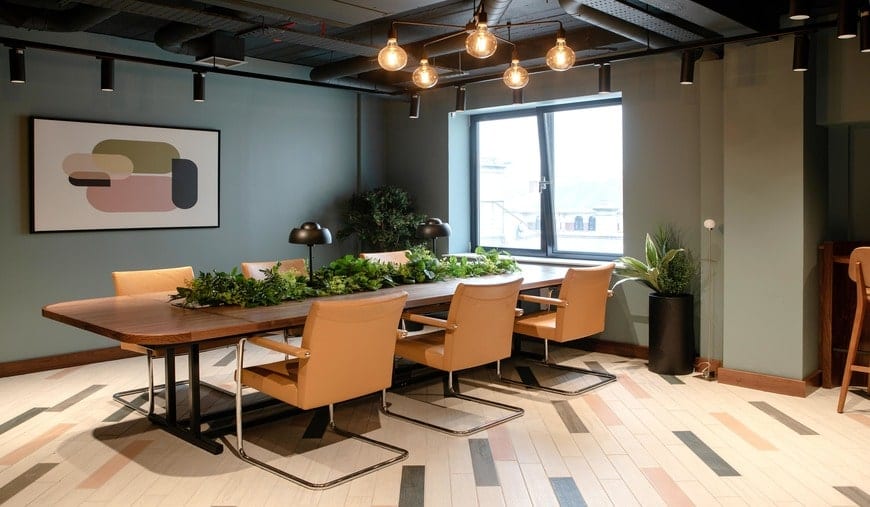How office design helps to create comfortable and collaborative coworking
Over the years, a lot has been written about what type of working environment is the most productive for employees. For a long time, open plan designed offices have been the default that people reached towards. With companies like Pixar and Google being advocates for creating workplaces where collaboration is encouraged, it’s easy to see why so many companies followed suit. Both companies are highly successful and value their company culture, who wouldn’t want to follow in their footsteps?
Collaboration and office design
In the case of Pixar, their open plan spaces were created to allow employees who wouldn’t normally interact the opportunity to run into each other organically. People from all levels of the company could meet informally, creating a less hierarchical company culture and helping to break down perceived barriers between different levels of employees. If you’re interested in how Pixar managed this so successfully, we recommend checking out Ed Catmull’s book Creativity Inc. It’s got lots of fantastic insights into facilitating a creative workforce, as well as telling the story of the evolution of Pixar’s workspaces.
While the popularity of this type of environment grew, so too did the trend for working more informally across the board. As the progression into more relaxed working environments continued, the popularity of coworking spaces grew. Some early coworking spaces were buildings that were repurposed into working spaces with little thought into how well they would function as creative areas to work in. They started off as an alternative to working from coffee shops, libraries, or from home but over the years they have become leading examples of how to create workspaces that make sense for everyone.
How to design spaces for extroverts, introverts and ambiverts
Countless articles have been written about open plan offices vs private offices and which type offers the more productive working environment. It seems like there are contradictory studies every month, which makes a certain sense when you are trying to accommodate all of your employee’s needs. You have to take into account that not everyone works to their best ability in the same environment, which can make finding balance a challenge. Some people thrive in communal, super social spaces, while others prefer to have a quiet space in order to keep their focus on the task at hand without interruptions. There are also people who fluctuate between either option, they can work happily alongside their coworkers but are just as content to work by themselves.
Creating communal areas for people to meet and interact is important but so too is providing space for quiet work. Phone booths, meeting rooms, and breakaway spaces all allow for people to slip away from the noise and crowd of an open plan office when they need to focus their concentration. Providing areas for all working preferences is one way to show your employees that you are taking their needs into consideration.
The growth in popularity of design led spaces is a great way to navigate the challenges associated with creating space that works for its users. By accepting that we need a combination of workspaces to ensure maximum productivity and allowing people to work in the way that best suits them, we can provide comfortable coworking spaces for everyone. Of course, some work will always require people to be stationed at a desk or in a specific area but with the rapid expansion in technology it’s becoming more and more common to see companies adopting a flexible approach to where and how employees carry out their work.
Bringing the concept of comfort to work and why it’s important
We spend so much time at work that it makes sense that we want our environments to be as comfortable as possible. Giving staff the option to change up where they work means that extra care needs to be taken to maintain standards across all aspects of workplaces. Ensuring that seating and desks are fit for purpose and appealing to use is a great way to do that. If you can offer options like adjustable desks, standing desks, communal and solitary spaces, and a variety of seating options you’re a good way towards ensuring that your employee’s needs are being met.
On an individual basis there are lots of things you can do to, from adjusting the glare and brightness on your screens, to scheduling regular breaks from your desk and screen, that will help you to stay comfortable at work. If you have a set space that you work from every day it can be nice to add some personal touches, from plants to pictures, that make your space feel more comfortable. Even if you move around with your laptop you can add a little personal touch with your choice of screensaver in lieu of a photograph at a desk. We’ve written before about the ways you can stay healthy as well as comfortable at your workstation so no matter where you’re based and what your setup is these tips can help you.
How clever design can help with office politics
How many times have you been in an office where things like the temperature of the room, the noise from coworkers when they take calls, or mini meetings taking place right beside your desk, have been things that get in the way of you doing your work? This can be especially challenging in a coworking environment when there are multiple companies using the same space. Fortunately, clever office design can be used to help to address some of these issues. Adding soundproof phone booths is a great way to make sure that your calls don’t interfere with your coworker’s concentration, and vice versa; creating breakaway spaces like club rooms is an effective way to manage the need for somewhere to have informal chats, as well as serving as a space for people who need to slip away for a while to work without interruptions.
As for the office temperature, this one can be the trickiest to manage. With so many people using a shared space it’s difficult to accommodate everyone but having access to the heating/ air conditioning controls usually leads to a majority rules situation in a shared space. It might not be practical for every office but trying to match people’s preference to where they’re situated in an office can help a lot. If one of your colleagues runs warm it might be worth setting them up near a window so they can control their own access to cool air.
As people move towards more sustainable practices in the workplace the growth in popularity of smart buildings using energy efficient systems to control facilities like light, heat, air conditioning and ventilation systems is something to be aware of too. Finding optimum settings can help to dispel a lot of the above issues, as well as improving the ways we positively impact our environments.
Lots of people will be familiar with having a paper free office, something that’s much easier with today’s tech and cloud technology. The lack of paper files needing to be stored frees up a lot of space that was traditionally used for filing cabinets and walls packed with shelves. Offices can use this space to add phone booths and quiet corners. As offices embrace sustainability it’s important to remember that the places where we work have an impact on our external environment as well as ourselves. If you’d like to know more about sustainability at work be sure to check out our post on simple changes that you make in your own office here.
How Glandore uses design to complement our workspaces
Enlisting the help of a design team is one way to make sure that your coworking environment has been carefully thought out, from the aesthetic to the practical. Common sense things like positioning of wall sockets and power points can definitely coexist with having fixtures and fittings that are pleasing to use. We’ve worked with 21 Spaces on lots of our recent projects and their understanding of our business has been a perfect example of how form meeting function is possible in the workplace. Understanding how people move around a space, from traffic flows in communal areas to how people use their individual workspaces, has been at the heart of our design led collaborations with 21 Spaces.







